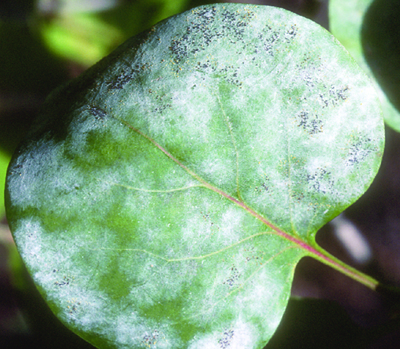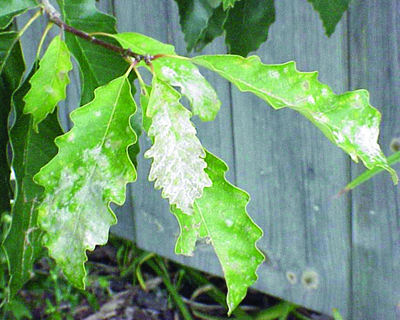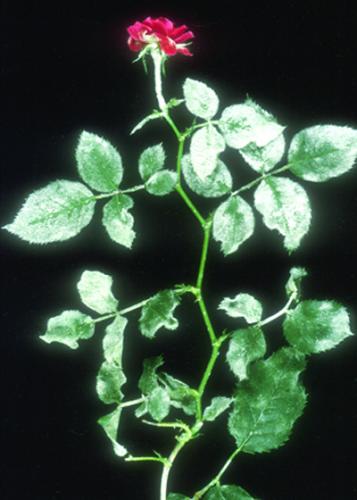Powdery mildews
July 31, 2015
Cause
Several different genera of fungi.
Hosts
Sphaerotheca pannosa var. rosae, which causes powdery mildew on roses, and Microsphaera syringae which affects lilac, are host specific. Some species of powdery mildew, such as the Microsphaera penicillata complex, may affect a wide range of ornamental trees and shrubs.
Symptoms
White, powdery coating on leaves, distorted or stunted foliage, shoots, flowers or fruit, chlorosis, browning and premature death of leaves, and slower growth are all symptoms of infection by powdery mildew.
How it’s spread
The mildews that affect roses and hawthorns overwinter in buds and infect new growth, but many mildews survive winter in special fruiting structures and release spores from them the following season. Spores travel on air currents to infect susceptible host plants. Rain inhibits spore germination, but high humidity may make the disease more severe. Dry weather that is cool at night and warm during the day favors the development of powdery mildew.

Powdery mildew on lilac. The dark patches contain cleistothecia, fruiting structures that survive overwinter.
Management
Powdery mildews that overwinter in buds may disfigure or prematurely kill new growth. Fungicides may be needed to manage them. Powdery mildews appearing on plants late in the season may be considered cosmetic; and generally do not require fungicides. Rake up and discard infected leaves to reduce the amount of fungus overwintering on leaf litter. Avoid practices that encourage succulent growth, such as heavy fertilization, and excessive pruning. Avoid overcrowding plants. Plants in shaded areas may be more prone to mildew. Avoid overhead watering in late afternoon or evening.


The fungal mat of white mycelium on aerial plant parts (shown here on oak and rose) has a powdery appearance that gives the disease its common name.
Print a PDF of this page: Powdery mildews



 Print
Print Email
Email



